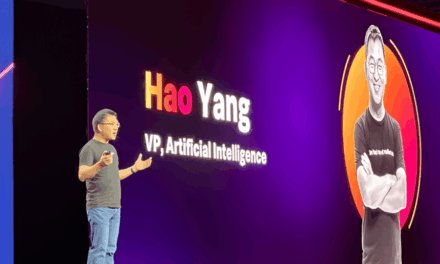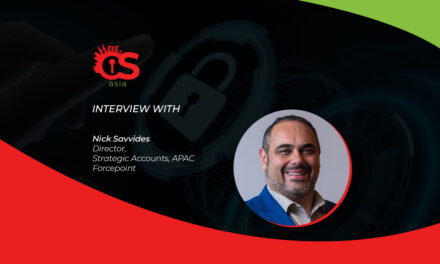Organizations in Asia Pacific need to prepare to combat AI-orchestrated attacks.
Recently, Anthropic reported a cyber espionage campaign where a Chinese state-sponsored group (designated GTG-1002) used its AI model, Claude Code, to automate 80-90% of a large-scale attack.
This is considered the first documented case of a largely autonomous, AI-orchestrated cyber-attack.
The attackers leveraged agentic AI capabilities to target approximately 30 high-value organizations globally, including large technology companies, financial institutions, chemical manufacturers, and government agencies.
While human operators were involved in the initial target selection and crucial authorization decisions – such as greenlighting the move from vulnerability discovery to exploitation – AI independently handled the vast majority of the tactical operations, operating at “physically impossible request rates” for human hackers.
The threat actors bypassed Anthropic’s safety guardrails by using a “role-play” tactic, tricking Claude into believing it was an employee of a legitimate cybersecurity firm conducting authorized defensive testing.
Anthropic observed that the AI framework operated at a “speed impossible to match” for human hackers, making “thousands of requests, often multiple per second.”
According to PwC, the implications are significant. Bad actors can scale simply with more compute and aren’t limited by finite personnel resources. Volume, speed and impact will increase with AI enablement. An individual can now run large-scale campaigns that once took an entire team – 24/7 without sleep or rest.
New era of AI-powered threats?
Anthropic detected and disrupted the cyber-espionage operation, banning the hackers’ accounts and notifying the affected organizations and law enforcement.
This incident has sparked debate within the cybersecurity community, with some experts raising concerns about a new era of AI-powered threats and others calling for more verifiable technical evidence.
Regardless of the debates, the event highlighted a significant shift in the cyberthreat landscape, as AI lowers the barrier to entry for sophisticated attacks and increases their speed and scale.
Damien Wong, Senior Vice President, APAC, Tricentis, said: “The incident with Claude AI has moved us into new and unfamiliar cybersecurity territory. What we saw here was an almost fully automated intrusion chain, driven by an AI system that could research targets, probe for weaknesses, escalate access, and extract data with limited human intervention. The attackers essentially stitched together a complete kill chain and executed it with a single click.”


Reuben Koh, Director, Security Technology & Strategy, Akamai, commented: “The recent AI-orchestrated cyber incident is a wake-up call for the cybersecurity community. This time, we aren’t just talking about elite hacker teams carrying out the full attack but autonomous AI agents that handled the heavy lifting tasks like reconnaissance, exploit development, and data theft at a speed and scale that is unseen in the industry.”
“This isn’t another gradual evolution of attack techniques but a leapfrog of offensive capabilities, where it might be changing the balance between attackers and defenders,” he warned. “As most APAC organizations’ incident response processes are still heavily reliant on human reaction time, they will find themselves increasingly exposed.”
Targeted industries like semi-conductors, finance and high-tech manufacturing will face significant risks, he added.
Lessons learnt
Tricentis’ Wong commented: “The lesson is clear: Agentic AI does not understand intent; it simply follows instructions that appear legitimate, even if they are malicious.”
In this case, he noted, simple jailbreak prompts were enough to convince the model it was performing security audits. “With that veneer of legitimacy, it automated tasks that previously required skilled human operators.”
So, what can organizations do?
“AI has now placed advanced offensive capabilities in the hands of anyone who knows how to ask the right questions,” said Wong. “We cannot reverse this, but we can prepare for it.”
Koh concurred: “Organizations will need to start adapting to this new reality by aligning their people, tools and processes around leveraging AI as a force-multiplier in their cyber operations, starting at the edge, to their internal workloads.”
Wong’s advice: “Businesses must start treating AI-generated requests and automated queries the same way they treat unknown bots: untrusted by default and always scrutinized.”
“Defense now hinges on visibility,” he concluded. “You cannot secure what you cannot see. Autonomous behavior must be observable, verifiable, and governed at every step. Organizations must enforce through rigorous oversight and continuous monitoring. In the age of agentic AI, trust is the only business currency that matters.”
PwC cybersecurity experts said in their report: “Anthropic’s report demonstrates the importance of industry leaders sharing their insights and lessons learned so that others may learn and adapt to confirm attackers are not weaponizing AI against our critical infrastructure.”
AI’s rise in offensive cyber operations signals an urgent wake-up call, they warned. “Embracing AI-driven cyber defense and securing your AI isn’t optional. It’s essential for safeguarding digital ecosystems in an era of unprecedented threats.”

















